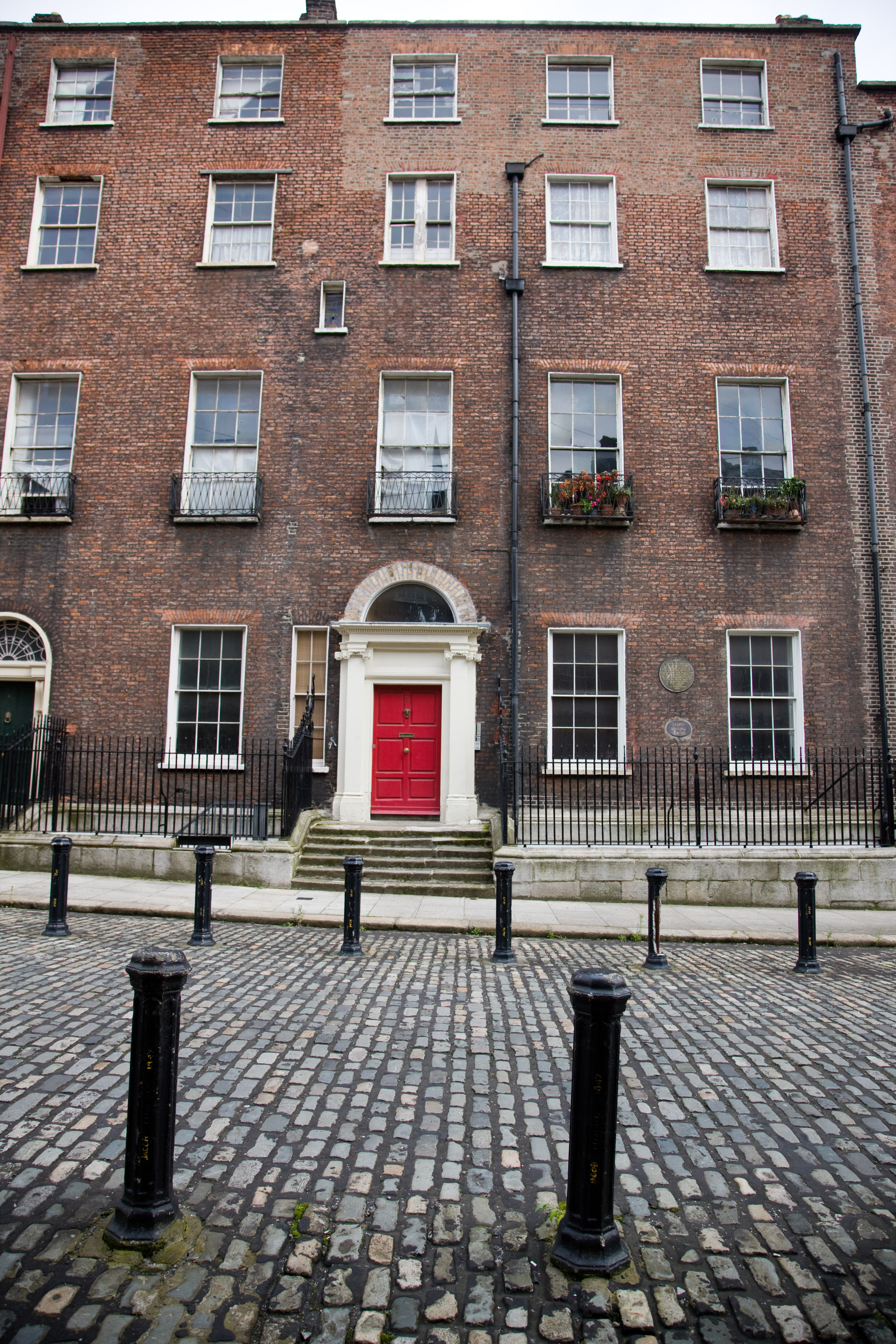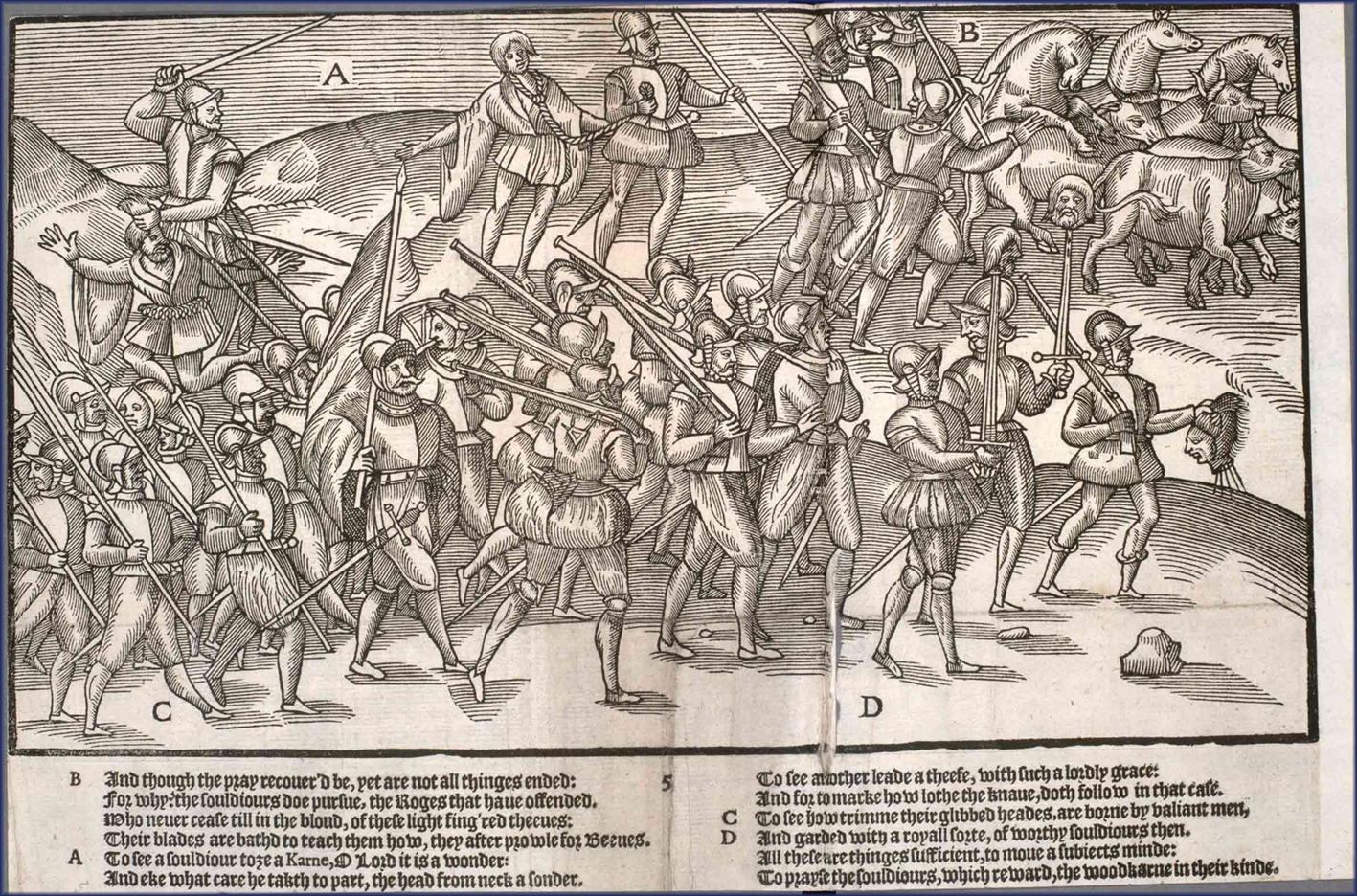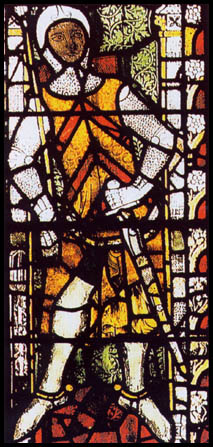|
Uí Briain
The O'Brien dynasty (; ; genitive ''Uí Bhriain'' ) was an Irish Clan and noble house of Munster, founded in the 10th century by Brian Boru of the Dál gCais (Dalcassians). After becoming King of Munster, through conquest he established himself as ''Ard Rí na hÉireann'' (High King of Ireland). Brian's descendants thus carried the name Ó Briain, continuing to rule the Kingdom of Munster until the 12th century where their territory had shrunk to the Kingdom of Thomond which they would hold for just under five centuries. In total, four Ó Briains ruled in Munster, and two held the High Kingship of Ireland (with opposition). After the partition of Munster into Thomond and the MacCarthy Kingdom of Desmond by Tairrdelbach Ua Conchobair in the 12th century, the dynasty would go on to provide around thirty monarchs of Thomond until 1542. During part of this period in the late 13th century they had a rivalry with the Norman de Clare house, disputing the throne of Thomond. The last ... [...More Info...] [...Related Items...] OR: [Wikipedia] [Google] [Baidu] |
O'Brien Arms
O'Brien may refer to: People * O'Brien (surname), an Irish surname * O'Brien dynasty, a powerful Irish dynasty that ruled Munster and produced several High Kings of Ireland Places United States * O'Brien, California, an unincorporated community in Shasta County * O'Brien, Florida, an unincorporated community in Suwannee County * O'Brien, Oregon, a census-designated place and unincorporated community in Josephine County * O'Brien, Texas, a city in Haskell County * O'Brien, West Virginia, an unincorporated community in Barbour County * O'Brien County, Iowa, a county Other places * O'Brien, Argentina, a town in Buenos Aires Province, Argentina * O'Briens Hill, Queensland, a locality in the Cassowary Coast Region, Australia * O'Brien Island, in the South Shetland Islands, Antarctica * O'Brien Island, Chile, in the Magallanes Region, Chile Ships * USS ''O'Brien'', a list of ships with this name * ''Capitan O'Brien''-class submarine three submarines built for the Chil ... [...More Info...] [...Related Items...] OR: [Wikipedia] [Google] [Baidu] |
Munster
Munster ( or ) is the largest of the four provinces of Ireland, located in the south west of the island. In early Ireland, the Kingdom of Munster was one of the kingdoms of Gaelic Ireland ruled by a "king of over-kings" (). Following the Norman invasion of Ireland, the ancient kingdoms were shired into Counties of Ireland#2.1 Pre-Norman sub-divisions, counties for administrative and judicial purposes. In later centuries, local government legislation has seen further sub-division of the historic counties. Munster has no official function for Local government in the Republic of Ireland, local government purposes. For the purposes of the International Organization for Standardization, ISO, the province is listed as one of the provincial sub-divisions of the State (ISO 3166-2:IE) and coded as "IE-M". Geographically, Munster covers a total area of and has a population of 1,373,346, with the most populated city being Cork (city), Cork. Other significant urban centres in the provin ... [...More Info...] [...Related Items...] OR: [Wikipedia] [Google] [Baidu] |
Europe
Europe is a continent located entirely in the Northern Hemisphere and mostly in the Eastern Hemisphere. It is bordered by the Arctic Ocean to the north, the Atlantic Ocean to the west, the Mediterranean Sea to the south, and Asia to the east. Europe shares the landmass of Eurasia with Asia, and of Afro-Eurasia with both Africa and Asia. Europe is commonly considered to be Boundaries between the continents#Asia and Europe, separated from Asia by the Drainage divide, watershed of the Ural Mountains, the Ural (river), Ural River, the Caspian Sea, the Greater Caucasus, the Black Sea, and the waterway of the Bosporus, Bosporus Strait. "Europe" (pp. 68–69); "Asia" (pp. 90–91): "A commonly accepted division between Asia and Europe ... is formed by the Ural Mountains, Ural River, Caspian Sea, Caucasus Mountains, and the Black Sea with its outlets, the Bosporus and Dardanelles." Europe covers approx. , or 2% of Earth#Surface, Earth's surface (6.8% of Earth's land area), making it ... [...More Info...] [...Related Items...] OR: [Wikipedia] [Google] [Baidu] |
Primogeniture
Primogeniture () is the right, by law or custom, of the firstborn Legitimacy (family law), legitimate child to inheritance, inherit all or most of their parent's estate (law), estate in preference to shared inheritance among all or some children, any illegitimate child or any collateral relative. In most contexts, it means the inheritance of the firstborn son (agnatic primogeniture); it can also mean by the firstborn daughter (matrilineal primogeniture), or firstborn child (absolute primogeniture). Its opposite analogue is partible inheritance. Description The common definition given is also known as male-line primogeniture, the classical form popular in European jurisdictions among others until into the 20th century. In the absence of male-line offspring, variations were expounded to entitle a daughter or a brother or, in the absence of either, to another collateral relative, in a specified order (e.g., male-preference primogeniture, Salic primogeniture, semi-Salic primogenitu ... [...More Info...] [...Related Items...] OR: [Wikipedia] [Google] [Baidu] |
Tanistry
Tanistry is a Gaelic system for passing on titles and lands. In this system the Tanist (; ; ) is the office of heir-apparent, or second-in-command, among the (royal) Gaelic patrilineal dynasties of Ireland, Scotland and Mann, to succeed to the chieftainship or to the kingship. The word is preserved in the Republic of Ireland's government, where the prime minister is the ''Taoiseach'' while the deputy prime minister is the ''Tánaiste''. Origins Historically the tanist was chosen from among the heads of the ''roydammna'' or "righdamhna" (literally, those of ''kingly material'') or, alternatively, among all males of the '' sept'', and elected by them in full assembly. The eligibility was based on descent from a king to a few degrees of proximity. Usually descent from the male lines of a king was the norm, however in Scotland, descent through the female lines of a king was also accepted, possibly because of an intermingling with the Pictish succession rules. An example of th ... [...More Info...] [...Related Items...] OR: [Wikipedia] [Google] [Baidu] |
Earl Of Thomond
Earl of Thomond was an hereditary title in the Peerage of Ireland. It was created twice for the O'Brien dynasty which is an ancient Irish sept native to north Munster. History and background First creation Under the Crown of Ireland Act 1542, King Henry VIII of England was created King of Ireland by the Parliament of Ireland. In consequence, all reigning monarchs and clan chiefs in Ireland were ordered to surrender their native titles in return for peerages. This surrender and regrant offer was conditional upon the adoption of Tudor customs and laws, including pledging allegiance to the Irish Crown and apostatising from the Catholic faith by accepting the articles of the state established Church of Ireland. Through surrender and regrant, the earldom of Thomond was created in 1543 for Murrough O'Brien. He had previously been styled King of Thomond and was descended from the ' or High King of Ireland, Brian Boru. O'Brien was also created Baron Inchiquin, on 1 July 1543. On t ... [...More Info...] [...Related Items...] OR: [Wikipedia] [Google] [Baidu] |
House Of Tudor
The House of Tudor ( ) was an English and Welsh dynasty that held the throne of Kingdom of England, England from 1485 to 1603. They descended from the Tudors of Penmynydd, a Welsh noble family, and Catherine of Valois. The Tudor monarchs ruled the Kingdom of England and the Lordship of Ireland (later the Kingdom of Ireland) for 118 years with five monarchs: Henry VII of England, Henry VII, Henry VIII, Edward VI, Mary I and Elizabeth I. The Tudors succeeded the House of Plantagenet as rulers of the Kingdom of England, and were succeeded by the Scottish House of Stuart. The first Tudor monarch, Henry VII, descended through his mother from the House of Beaufort, a legitimised branch of the English royal House of Lancaster, a cadet house of the Plantagenets. The Tudors of Penmynydd, Tudor family rose to power and started the Tudor period in the wake of the Wars of the Roses (1455–1487), which left the main House of Lancaster (with which the Tudors were aligned) extinct in the male ... [...More Info...] [...Related Items...] OR: [Wikipedia] [Google] [Baidu] |
Henry VIII Of England
Henry VIII (28 June 149128 January 1547) was King of England from 22 April 1509 until his death in 1547. Henry is known for his Wives of Henry VIII, six marriages and his efforts to have his first marriage (to Catherine of Aragon) annulled. His disagreement with Pope Clement VII about such an annulment led Henry to initiate the English Reformation, separating the Church of England from papal authority. He appointed himself Supreme Head of the Church of England and dissolution of the monasteries, dissolved convents and monasteries, for which he was List of people excommunicated by the Catholic Church, excommunicated by the pope. Born in Greenwich, Henry brought radical changes to the Constitution of England, expanding royal power and ushering in the theory of the divine right of kings in opposition to papal supremacy. He frequently used charges of treason and heresy to quell dissent, and those accused were often executed without a formal trial using bills of attainder. He achi ... [...More Info...] [...Related Items...] OR: [Wikipedia] [Google] [Baidu] |
Kingdom Of Ireland
The Kingdom of Ireland (; , ) was a dependent territory of Kingdom of England, England and then of Kingdom of Great Britain, Great Britain from 1542 to the end of 1800. It was ruled by the monarchs of England and then List of British monarchs, of Great Britain, and was Dublin Castle administration, administered from Dublin Castle by a viceroy appointed by the English king: the lord deputy of Ireland. Aside from brief periods, the state was dominated by the Protestant English (or Anglo-Irish people, Anglo-Irish) minority, known as the Protestant Ascendancy. The Protestant Church of Ireland was the state church. The Parliament of Ireland was composed of Anglo-Irish nobles. From 1661, the administration controlled an Irish Army (1661–1801), Irish army. Although ''de jure'' styled as a kingdom, for most of its history it was ''de facto'' an English Dependent territory, dependency (specifically a viceroyalty). This status was enshrined in the Declaratory Act 1719, also known as th ... [...More Info...] [...Related Items...] OR: [Wikipedia] [Google] [Baidu] |
De Clare
The House of Clare was a prominent Anglo-Norman noble house that ruled the Earldoms of Pembroke, Hertford and Gloucester in England and Wales throughout its history, playing a prominent role in the Norman invasion of Ireland. They were descended from Richard Fitz Gilbert, Lord of Clare (1035–1090), a kinsman of William the Conqueror who accompanied him into England during the Norman conquest of England. His great-grandfather was Richard I of Normandy who was the son of William Longsword and the grandson of the Viking Rollo. As a reward for his service, Richard was given lands in Suffolk centred on the village of Clare. As a result, Richard and his descendants carried the name of 'de Clare' or 'of Clare'. The de Clares ranked among the greatest baronial houses of the early Middle Ages and were the proprietors of the monumental Caerphilly Castle, Pembroke Castle, Castell Coch, and over 190 manors in England. Origins The Clare family derived in the male line from Gilb ... [...More Info...] [...Related Items...] OR: [Wikipedia] [Google] [Baidu] |
Tairrdelbach Ua Conchobair
Toirdhealbhach Mór Ua Conchobhair (old spelling: Tairrdelbach Mór Ua Conchobair; 1088 – 1156) anglicised Turlough Mór O'Conor, was King of Connacht (1106–1156) and High King of Ireland (ca. 1120–1156). Family background and early life Toirdelbhach was born in the year 1088. He was the youngest son of Ruaidrí na Saide Buide (died 1118), and his mother was Mór, daughter of Toirdelbach Ua Briain (1009–14 July 1086). Therefore, through his mother, his great-great-grandfather was Brian Boru. His brothers were Niall (killed 1093), Tadc (killed 1097), Conchobar (murdered 1103), and Domnall, King of Connacht (deposed 1106). There was at least one sister, Dubhchobhlaigh Bean Ua hEaghra of Luighne Connacht (died 1131). Ruaidrí was married to four or more women. According to the Annals of Tigernach, Toirdelbach's mother died the year he was born, suggesting his birth may have been arduous. In 1092, King Ruaidrí was blinded by Flaithbertaigh Ua Flaithbertaigh, an incident ... [...More Info...] [...Related Items...] OR: [Wikipedia] [Google] [Baidu] |
Kingdom Of Desmond
The Kingdom of Desmond () was a historic kingdom in southwestern Ireland. It was founded in 1118 by Tadhg Mac Cárthaigh, King of Munster when the Treaty of Glanmire formally divided the Kingdom of Munster into Desmond and Thomond (, "North Munster"). It comprised all of what is now County Cork and most of County Kerry. Desmond was ruled by the Mac Cárthaigh (MacCarthy) dynasty. Other clans within the kingdom included the O'Sullivans and O'Donovans. Following the Norman invasion of Ireland in the late 12th century, the eastern half of Desmond was conquered by the Anglo-Normans and became the Earldom of Desmond, ruled by the Fitzmaurices and FitzGeralds—the famous Irish family known as the Geraldines. The king of Desmond, Diarmaid Mac Cárthaigh submitted to Henry II of England, but the western half of Desmond lived on as a semi-independent Gaelic kingdom. It was often at war with the Anglo-Normans. Fínghin Mac Carthaigh's victory over the Anglo-Normans at the Batt ... [...More Info...] [...Related Items...] OR: [Wikipedia] [Google] [Baidu] |






